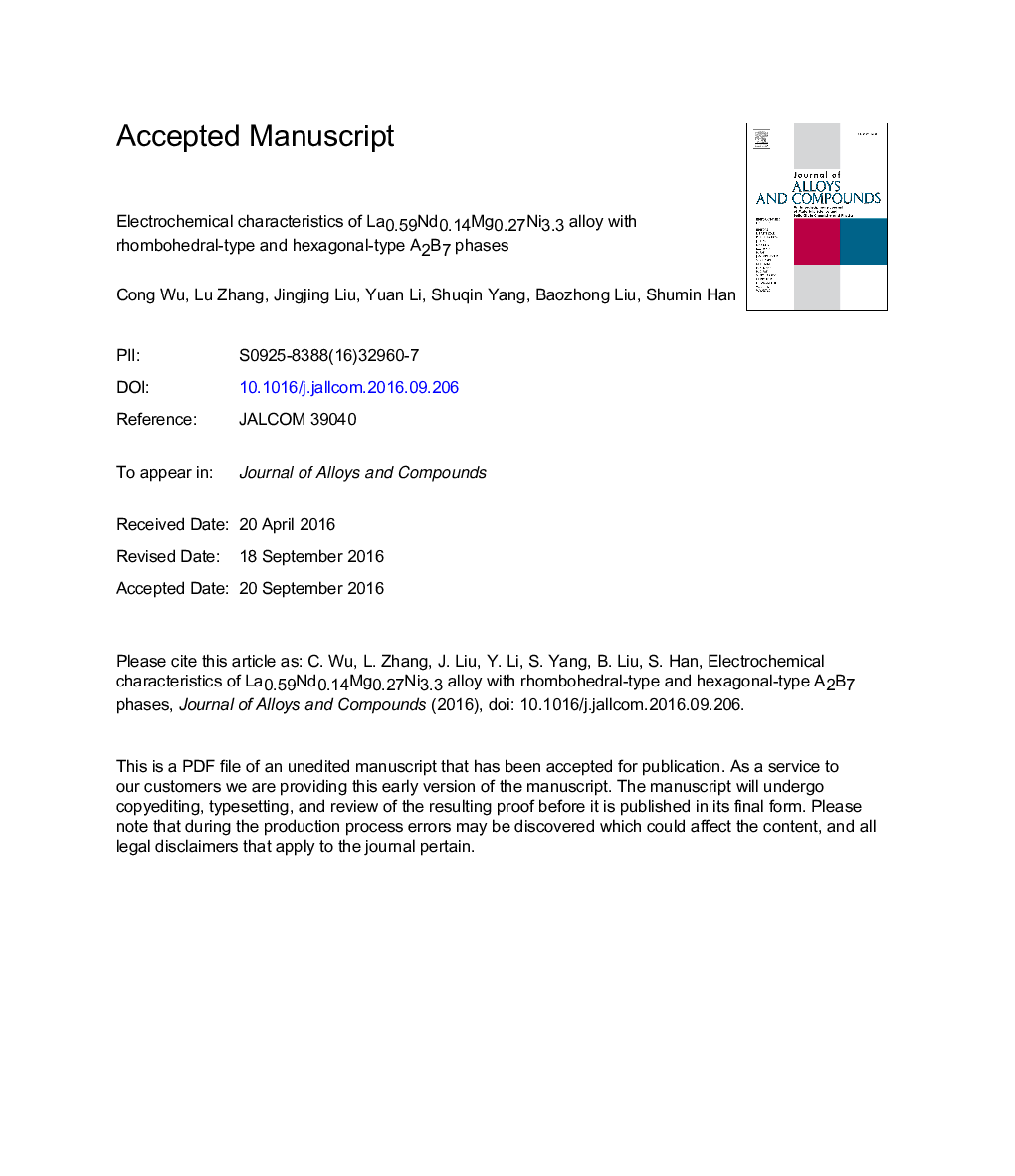| Article ID | Journal | Published Year | Pages | File Type |
|---|---|---|---|---|
| 5461045 | Journal of Alloys and Compounds | 2017 | 35 Pages |
Abstract
A La0.59Nd0.14Mg0.27Ni3.3 alloy with 72Â wt% Gd2Co7-type (3R-A2B7) and 28Â wt% Ce2Ni7-type (2H-A2B7) phases is prepared by induction melting followed by the annealing at 1148Â K. Upon further increasing the annealing temperature to 1248Â K, the 3R-A2B7 phase transforms into the 2H-A2B7 phase, forming an alloy with a 97Â wt% 2H-A2B7 phase and a 3Â wt% 3R-A2B7 phase. Electrochemical measurement shows that the discharge capacity retention of the alloy electrode at the 100th cycle increases from 88.5% to 92.4% as the 2H-A2B7 phase increases from 28Â wt% to 97Â wt%. Compared to the 3R-A2B7 phase, the 2H-A2B7 phase shows a stronger ability to resist amorphousiation during dehydrogenation and has better structural stability. Therefore, the transformation from the 3R-A2B7 phase to the 2H-A2B7 phase stabilizes the structure of the alloy against amorphization and oxidation, thus improving the cyclic stability of the alloy. Electrochemical pressure-composition (P-C) isotherms contain two discharge plateaus; the higher plateau corresponds to the 3R-A2B7 phase and the lower one is associated with the 2H-A2B7 phase. As the 2H-A2B7 phase increases, the high-rate dischargeability of the alloy electrodes increases from 56.8% to 66.3%.
Related Topics
Physical Sciences and Engineering
Materials Science
Metals and Alloys
Authors
Cong Wu, Lu Zhang, Jingjing Liu, Yuan Li, Shuqin Yang, Baozhong Liu, Shumin Han,
